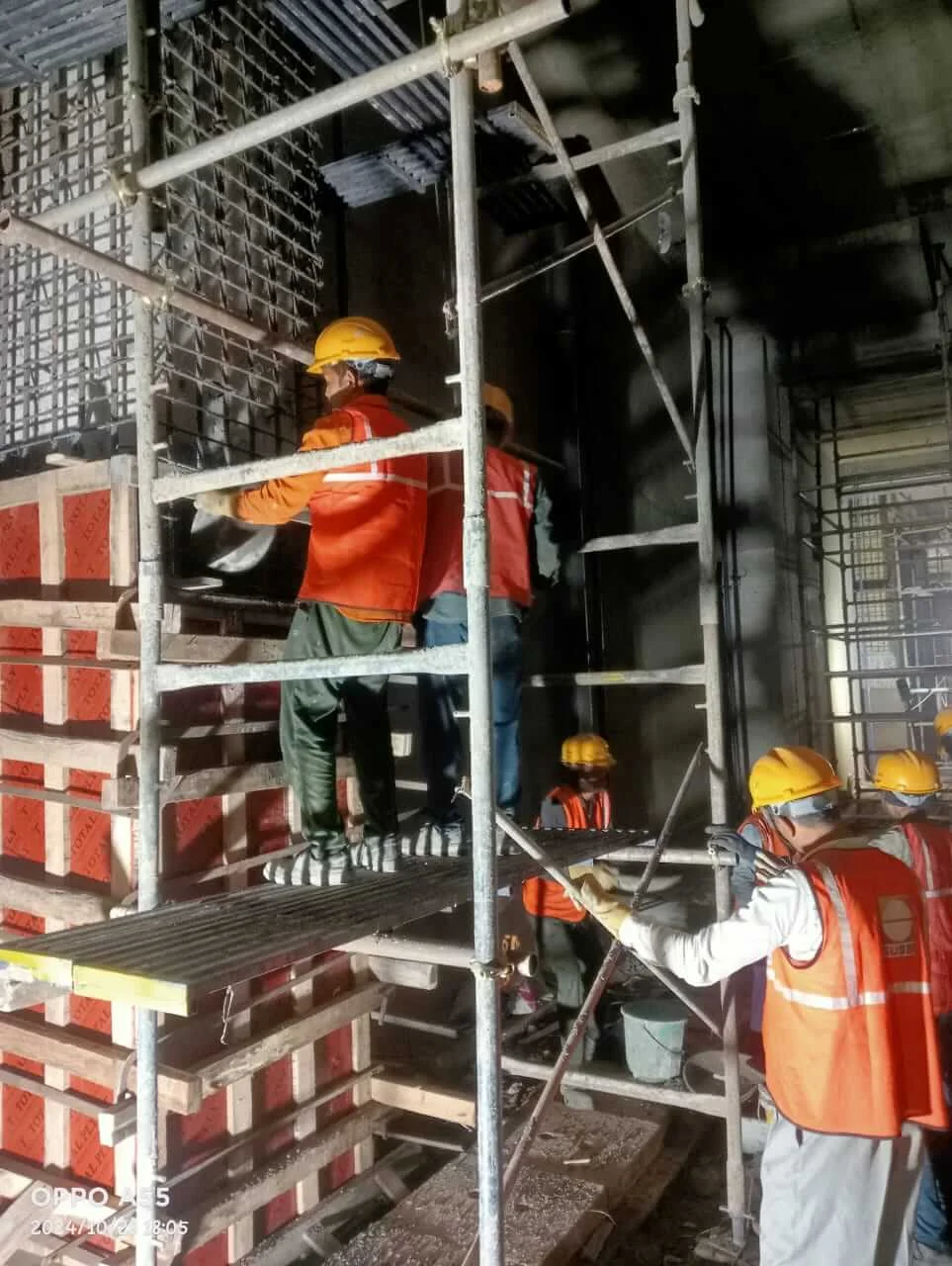Top 12 Benefits of RCC Column Jacketing for Commercial Buildings

Commercial buildings in India often deal with ageing concrete, increasing loads, and outdated construction standards. As buildings grow older, their columns may lose strength and stability. In these cases, repair and retrofitting become crucial. One trusted method is RCC Column Jacketing. This structural technique enhances the performance of weak columns without dismantling the entire structure. It is especially popular among engineers looking for practical solutions in commercial spaces across Indian cities.
1. Increases Load-Bearing Capacity
One of the most important reasons to use RCC column jacketing is to increase load capacity. Commercial building columns become heavier over time as a result of interior modifications or the addition of new floors. Jacketing serves to increase compressive strength and restore column reliability. It provides support by incorporating new reinforcement and concrete layers. This method assures that the structure can safely support future loads. This strength improvement is especially beneficial to offices, malls, and hospitals.
2. Extends the Lifespan of Old Structures
India has numerous commercial properties that are 20 to 40 years old. These structures frequently feature worn-out columns, which represent a safety danger. RCC Column Jacketing serves as a rejuvenating approach. It expands the building’s usage without requiring destruction. When used correctly, it reinforces columns to match modern design specifications. This contributes to the structural framework’s long-term stability. It saves business owners money and time by eliminating the need to build a new facility.
3. Enhances Earthquake Resistance
Seismic safety is becoming a major concern in India. Tremors occur regularly in Delhi, Gujarat, and Himachal Pradesh regions. Older buildings in these areas may not fulfil contemporary earthquake safety standards. RCC Column jacking increases ductility and stiffness, allowing the structure to sustain lateral stresses. It adds a protective shell to improve the building’s performance during seismic activity. This makes it the preferable option for upgrading commercial properties in earthquake-prone areas.
4. Cost-Effective Compared to Demolition
facility a new commercial facility is costly and time-consuming. RCC Column Jacketing is a cost-effective option. It enables building owners to enhance structural aspects while maintaining commercial operations. The supplies are inexpensive, and the labour required is reasonable. It is far cheaper than dismantling and reconstructing a structure. For small firms and institutions, this strategy provides both economic alleviation and structural safety.
5. Improves Fire Resistance
Commercial buildings frequently incorporate fire-prone areas such as kitchens and data centres. RCC Column Jacketing offers an additional layer of protection. It employs non-combustible concrete and steel that can withstand high temperatures. This reduces the amount of heat transferred to the original column core. In a fire, the jacketed column maintains structural integrity for a longer period. This allows more time for evacuation and reduces damage. It is an important update for structures that must comply with fire safety regulations.
6. Reduces Structural Vibrations
Buildings with weak columns may exhibit vibrations and deflections during routine use. This can disrupt the residents and diminish their comfort. RCC Column Jacketing increases rigidity and reduces undesired motion. As a result, floors become more sturdy, and the structure appears stronger. This feature is especially important in commercial offices or schools where people are constantly moving. It also improves the performance of vibration-sensitive machinery and equipment.
7. Minimal Disruption to Daily Operations
Many business establishments function around the clock. Shutting them down for repairs may be impossible. RCC Column Jacketing can be completed in phases, allowing businesses to remain open. Because it requires little breaking and excavation, the job site remains reasonably clean. Engineers can operate on a single column at a time. This makes the procedure perfect for use in environments such as hospitals, hotels, and businesses where interruption is not permitted.
8. Compatible With Existing RCC Structures
One significant advantage of RCC Column Jacketing is its compatibility. It readily integrates into the original structure. The materials combine nicely with aged concrete, resulting in a coherent component. This ensures even load distribution and lowers the risk of separation or failure. Builders can rely on this method for retrofitting because it does not require specialist materials. It seamlessly integrates old and new components, making it a preferred repair choice in Indian buildings.
9. Boosts Property Value
Commercial real estate represents a significant investment. Structural safety and compliance are significant factors in assessing value. Buildings with stronger columns have higher resale values. Tenants feel more comfortable renting or leasing a safer property. RCC Column Jacketing can also assist you achieve regulatory certifications. This enhances the building’s legal status and insurance ratings. It provides long-term benefits to developers and real estate owners.
10. Supports Additional Modifications
As firms expand, structural modifications become necessary. Adding floors, redesigning interiors, or installing heavy machinery all raise column loads. RCC Column Jacketing prepares the structure to accommodate these modifications. It reinforces weak spots and increases the column’s ability to withstand additional stress. Without this strengthening, such upgrades could jeopardize safety. This feature enables businesses to grow without structural concerns.
11. Environmentally Responsible Choice
Structure demolition and reconstruction leave a significant carbon footprint. RCC Column Jacketing has a higher level of sustainability. It saves resources and reduces waste. This makes it a responsible choice for enterprises with environmental concerns. In India, green building certification is gaining popularity. Owners contribute to sustainable development by choosing to retrofit rather than rebuild. It supports national initiatives to decrease building waste and environmental impact.
12. Improves Safety Without Changing Building Layout
In commercial structures, space planning is essential. Jacketing does not necessitate considerable design changes. It keeps the original layouts and room sizes. The additional layer surrounding the columns is minor but incredibly effective. This allows designers to maintain interior aesthetics while increasing structural safety. This flexibility is tremendously beneficial to business architects and engineers. It makes safety updates less obtrusive and more appealing to customers.
As India’s cities grow, it is critical to keep commercial buildings safe and sturdy. RCC column jacketing provides a realistic solution. It fortifies columns, boosts resilience, and extends building life. For business owners, developers, and site managers, it provides long-term security with little expenditure. The technique has been demonstrated to be effective, versatile, and ideal for Indian circumstances. It provides a much-needed competitive advantage in the property market.


